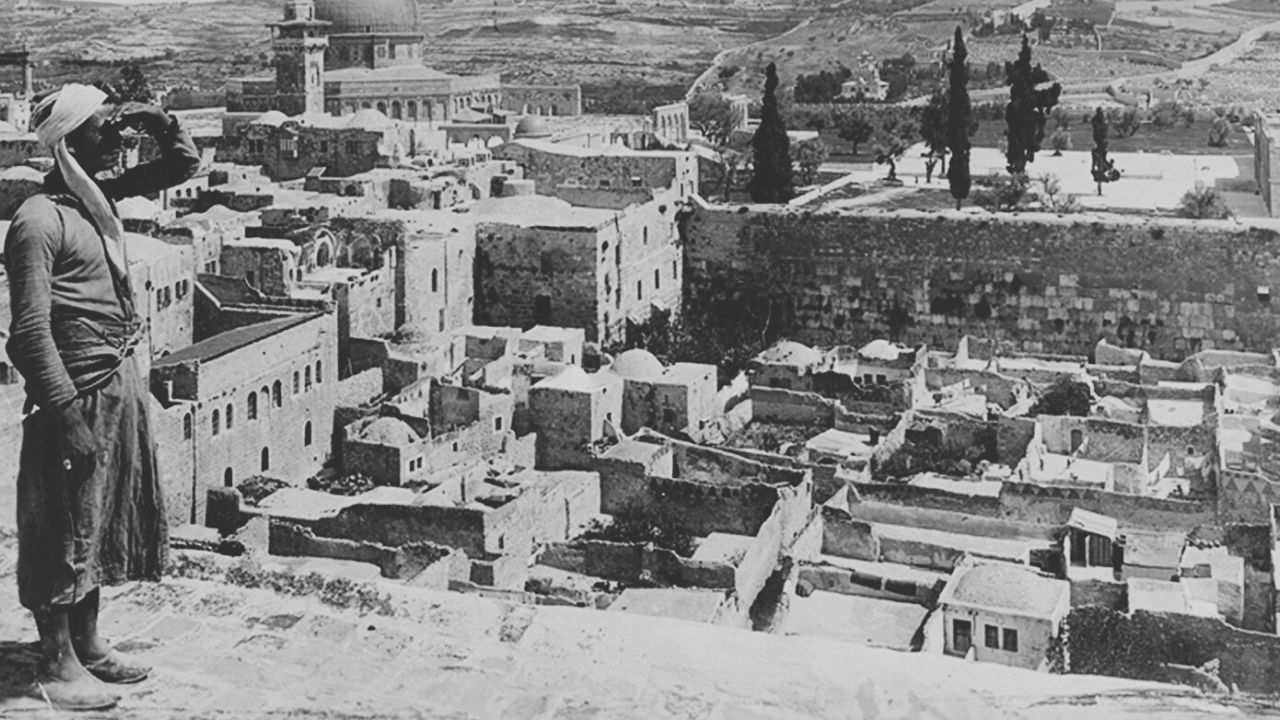Personal experiences can be encoded in artefacts, so that the object represents the memory, the significance and the emotional power of those experiences. objects can therefore be used to express a sense of self and a feeling of cultural affiliation.
Eilean Hooper-Greenhill, Museums and the interpretation of visual culture
The Israeli regime has been using archaeology for its settler colonial project and to construct a nationalist narrative of Jewish supremacy. It uses heritage appropriation as a tool to target and erase the native Palestinian presence and bait international tourists.
Tourists and tour operators should be aware of this context and not promote such propaganda.
Zionism and the Israeli institutions have used and abused the existing heritage of Palestine for its nationalist project, particularly through using “Biblical archeology”, a concept that has allowed Europeans and then zionists to construct a narrative of continuous presence in the “Holy Land” for their colonial objectives.
Archeological digging has mainly been used for jewish settlements expansion and land grab, for minimizing the existence and importance of non-jewish history and attracting a tourism that rewrites history according to their narrative.
Many artifacts on Palestinian sites have been looted and hidden away in Israeli institutions.
For example, statues, vases and other archaeological finds have been looted from the Sebastia ancient roman site located north of Nablus.
The Palestinian Department of Antiquities also reports that the Apartheid Wall has destroyed partially or fully around 800 archaeological sites.
The archaeological site of Sebastia was first excavated by Harvard archaeologists in 1908, making use of Palestinians as cheap labor, and was looted multiple times by colonial archaeologists funded by the Zionist movement.
Most of the site is now located in the so-called “area C” of the West Bank under full control of the Israeli military occupation and a jewish settlement has surrounded the site, harassing Palestinians.
In 1967 after annexing the eastern part of Jerusalem, Israel began aggressively excavating the old city of Jerusalem to take control of the Palestinian neighborhood surrounding the Al Aqsa compound.
It razed the 800-year-old Moroccan Quarter of Jerusalem, displacing 650 Palestinians, destroying homes and holy sites, to build a plaza in front of the Western Wall. Tourists visiting can see no sign there was once an entire neighborhood there.
The village of Silwan located just outside the old city is emblematic of the use of archeology for Israeli colonial expansion, and particularly the “City of David” theme park where Israeli authorities are investing billions for building a huge tourist complex and cable car station on historical claims contested by the archeological community
Silwan is home to more than 30,000 Palestinians. These excavations have caused structural damage to Palestinians’ homes and infrastructure foundations, which have also begun sinking into the hillside and also led to the expulsions of Palestinian families from their homes.
Excavations in Silwan have also damaged several ancient archeological sites, like a cemetery of the Abbasid caliphate era, and relics of the Jebusite Canaanite era (second millennium BC).
The Israeli Antiquities Authority and the municipality of Jerusalem gave the management monopoly of the site to the jewish settler organization “Elad”, and provided millions to dig and expand the site.
Elad fundraises abroad and notably the US, with tax-exempt charity status.
Gaza – a flourishing city notably during the Roman era – hides many archaeological sites dating all the way back to the Iron age onwards.
These are often buried under the rubble and destruction of Israel’s bombs, if not target themselves.
A research by Forensic Architecture details how Israel has deliberately targeted archaeological sites in the besieged Gaza strip in an open attack on Palestinian cultural heritage.
Useful resources:
- Dima Srouji documentary on Sebastia
- Forensic Architecture investigation on Gaza archaeological site
- Jerusalem Maghrebi Quarter website
